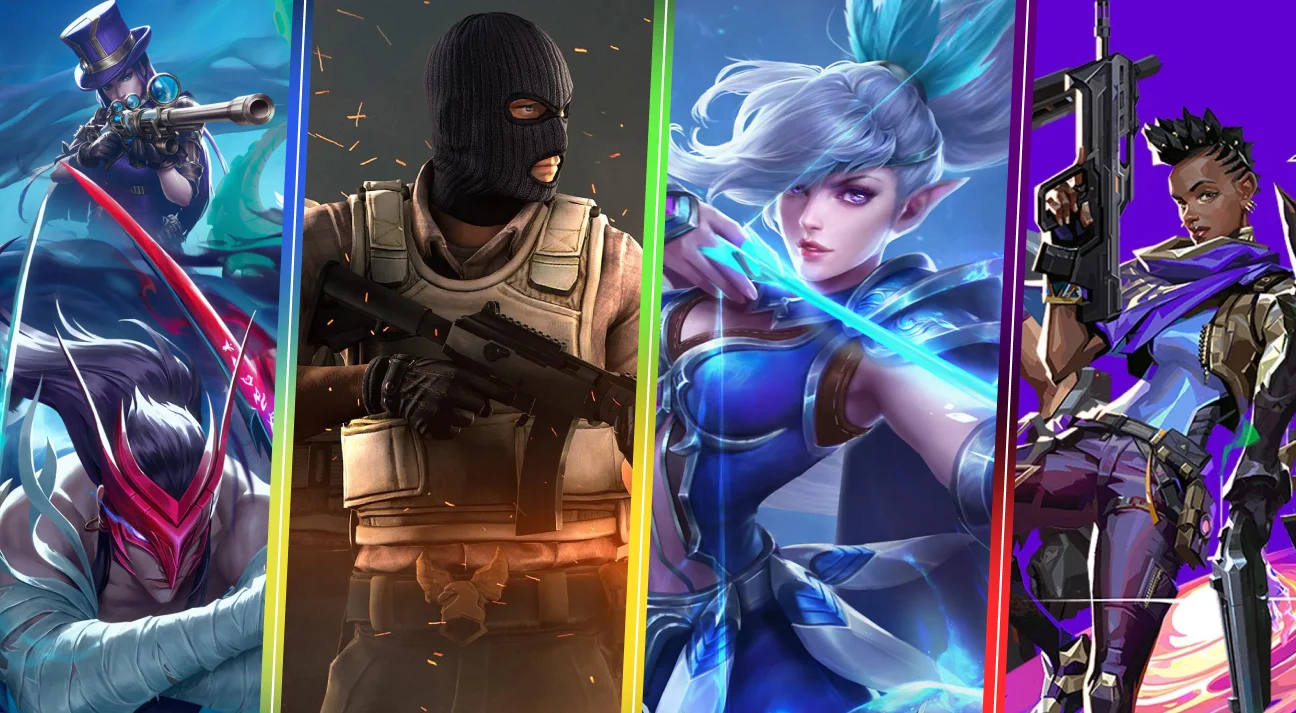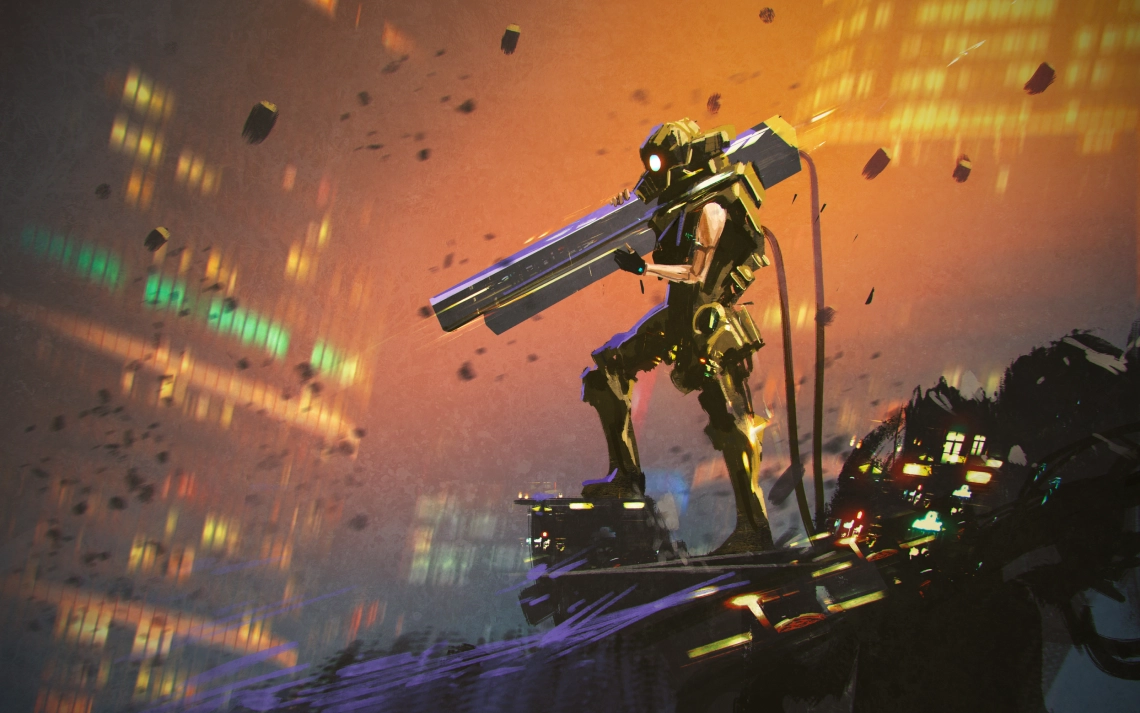
How AI and ML are Reshaping the Gaming Industry?
Imagine you’re playing a game, and the characters you meet aren’t just following a script. They’re using their brains to react to what you do. That’s Artificial Intelligence and Machine Learning in action! Game developers are using AI and ML algorithms to create characters that can think and learn while you play the game.
It’s like having a virtual friend who can adapt to your every move and react according to it, making the game feel more exciting and lifelike. However, AI and ML in gaming don’t stop here! These technologies are coming up with more innovations, transforming the gaming industry with each passing year.
In this blog, we will explore the role of AI and ML in gaming and how their algorithms will shape the future of games.
- The Role of AI and ML in Shaping the Gaming Landscape
- Examples of Games Currently Using AI and ML in Gaming
- The Current Status of AI and ML in Gaming
- What are the Upcoming AI & ML Future Innovations in Gaming?
- What are the Benefits of Investing in Games Integrated with AI and ML?
- Why Choose 300Mind for Developing Games with AI & ML Integrations?
- FAQs for AI and ML in Gaming
The Role of AI and ML in Shaping the Gaming Landscape
Over the last three years, the gaming industry has witnessed a massive surge in its player base. It has acquired a total of 2.7 billion players across the world, taking the overall market value of the gaming industry to $300 billion. Projections indicate that an additional 400 million new gamers will be added to the existing number of game lovers by the end of 2023. Experts are saying that new games with AI and ML integrations will capture a large market compared to the traditional ones.
In recent years, AI and ML integrations have changed the gaming landscape and how players interact with games. One of their primary contributions lies in enhancing character intelligence and behavior analysis. Both technologies are making the NPC and game environment more smarter and personalized for players. AI also supports lifelike animations and decision-making of NPCs, enriching the storytelling aspect of games and bringing virtual worlds closer to reality.
Also read: How Did the Gaming Industry Evolve with Time and Become Popular?
Examples of Games Currently Using AI and ML in Gaming
Gameplay mechanics are evolving rapidly using AI and ML integrations in innovative ways. Here are the examples of the most popular games that have adopted AI and ML and become hits among players.
1. F.E.A.R
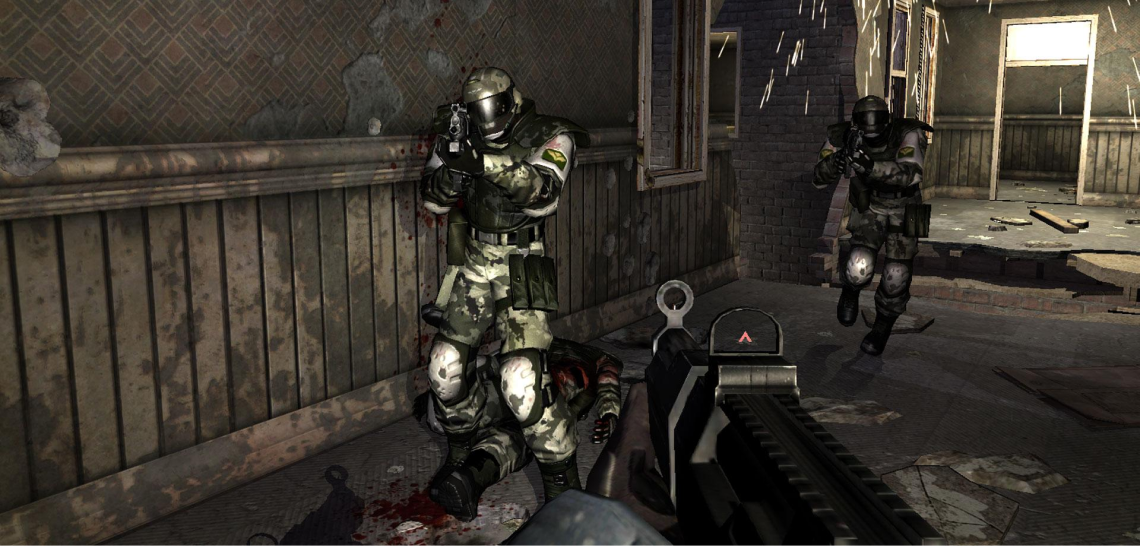
The F.E.A.R (First Encounter Assault Recon) video game series has used innovative AI algorithms to encourage realistic and intense enemy behavior. In this game, enemies behave more intelligently, flank the player, and work together as a team to attack the player with the support of artificial algorithms.
AI leveraged decision trees and dynamic pathfinding algorithms to adapt to change and respond to these new changes. Moreover, AI-controlled characters had realistic animations and movement patterns. They were able to climb obstacles, throw a grenade, evaluate the threat and react, leap over barriers, and perform acrobatic maneuvers, enhancing the sense of realism.
2. XCOM: Enemy Unknown
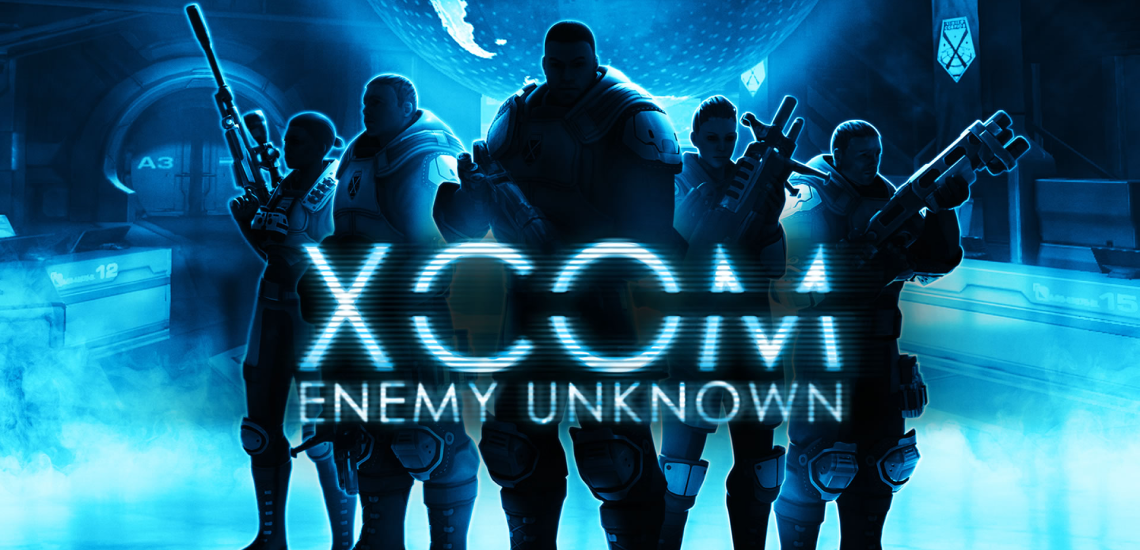
The success of “XCOM: Enemy Unknown” is attributed to the effective use of AI and ML algorithms. The game uses complex AI for alien enemies, and AI controls their tactics, decision-making power, and movements during combat. ML algorithms are used for procedural maps and mission generation.
These algorithms ensure each playthrough is unique and offers different challenges and opportunities. The game leverages ML to balance the difficulties of given missions according to the player’s performance and provide a tailored and unforgettable experience.
3. The Last of Us

The Last of Us is a highly successful and appreciated action-adventure game known for featuring advanced AI for human and infected enemies. In the game, the enemy AI has been designed to act and respond realistically to the player’s actions and environment.
Another highlight of the game is the companion AI that made Ellie, which is a player’s companion and helps demonstrate realistic behaviors and reactions. She assists players in combat, provides clues, and responds to the actions, making the game more interesting.
4. Minecraft
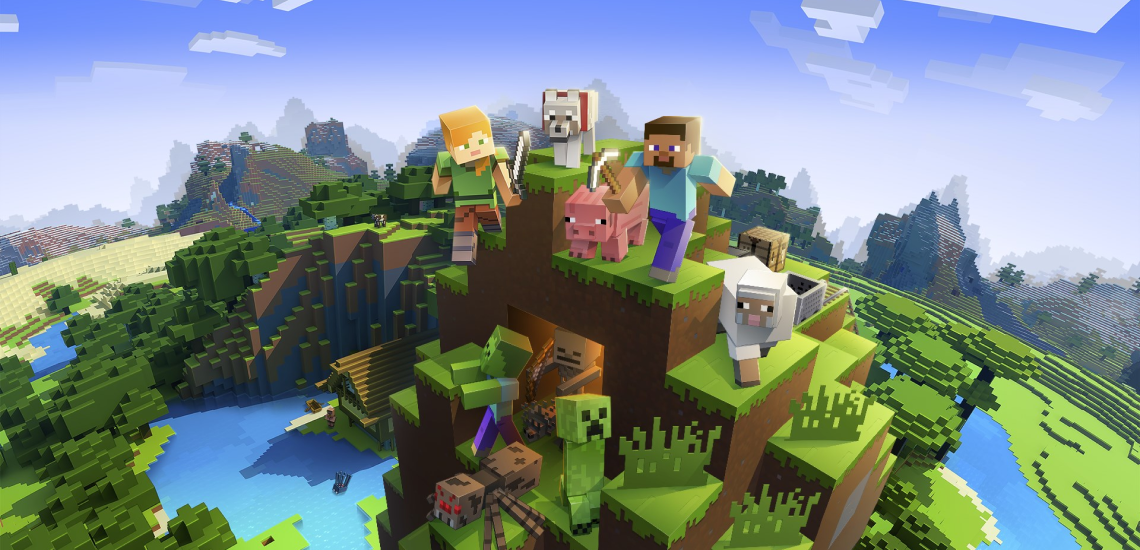
Minecraft is full of unnatural creatures and mobs inhabiting the game world. These mobs exhibit simple AI behaviors, such as zombies chasing players, villagers communicating with the environment, animals wandering around the areas, and other activities done in normal things. These AI behaviors made the game highly sophisticated and enhanced its immersion.
The game has also used AI and ML for texture generation, resource pack recommendations, content creation, fraud prevention, player behavior analysis, etc.
5. Dots and Boxes
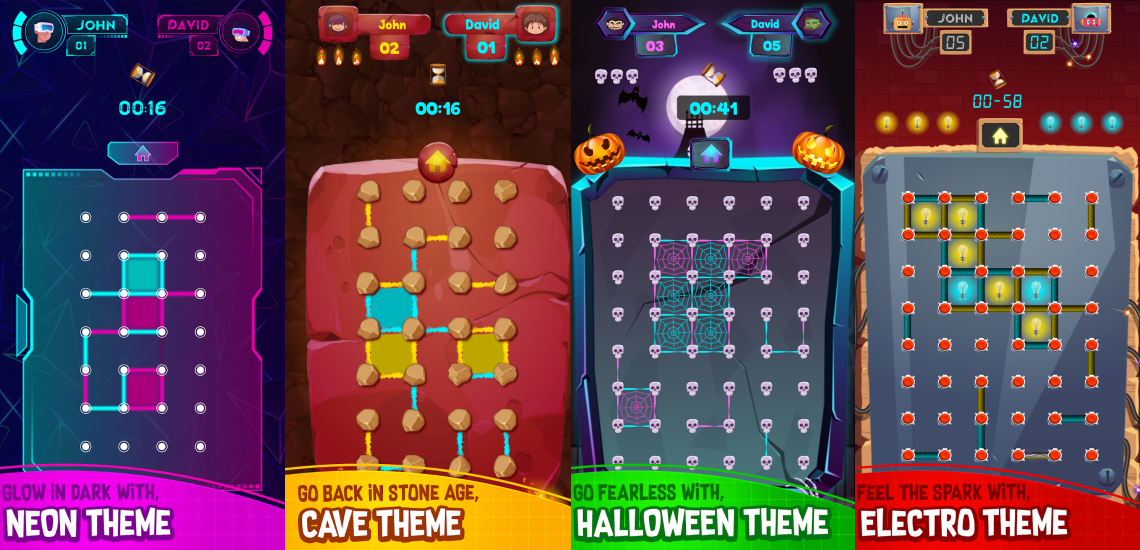
“Dots and Boxes” is the traditional pencil-and-paper game that all of us use to play in schools behind the pages of our copies. However, 300Mind has brought the game to our screens, taking us back to our childhood. The game promotes strategic thinking and human decision-making capabilities.
The game logic has been written using AI logic, and the player plays against the AI enemies or obstacles. In the game, AI-driven opponents offer different difficulty levels, ranging from easy to challenging. It gives options to adjust the competition level and combat against the enemy. The game tests your skill set, learning power, basic understanding, etc.
Along with these, games like FIFA, Red Dead Redemption, Rocket League, Halo: Combat Evolved, Stockfish, Middle Earth: Shadow of Mordor, Half-Life, Dark Forest, Grand Theft Auto 5, etc., have also used artificial intelligence and machine learning algorithms. The list will be long in the future with more games adapting to these technologies.
The Current Status of AI and ML in Gaming
Due to the faster advancements in technology, AI and ML have been already integrated into many games. Here are a few glimpses of the changes AI and ML integrations have brought.
AI-driven NPCs and Enemies
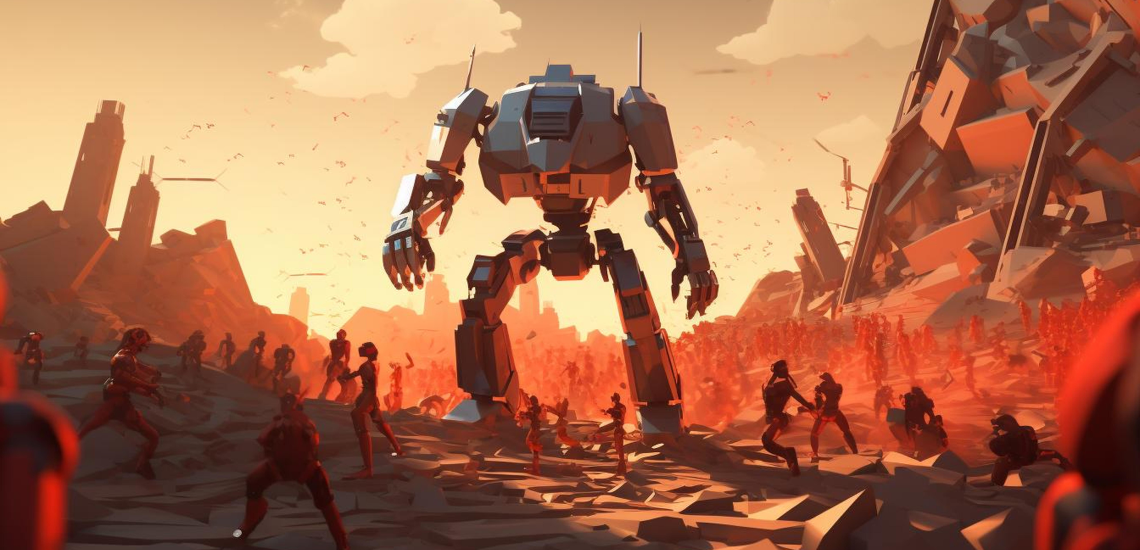
AI-driven NPCs (Non-Player Characters) and enemies are programmed with behavior patterns that dictate their responses and actions in the game world. These patterns involve combat tactics, decision-making, movements, actions, responses, and other related things. Advanced AI systems empower these NPCs and enemies to adapt to changing game conditions and player actions. They respond to player strategies, making gameplay challenging, interactive, and entertaining.
NPCs also navigate complex game environments. AI algorithms help them discover optimal paths, cross or avoid obstacles, and reach their destinations without getting stuck in the middle way. Moreover, AI will help them make decisions and draft strategies based on various factors, including players’ actions, objectives, gameplay goals, and rules.
Enhanced Game Environments
AI algorithms help generate game content, including landscapes, terrain, levels, buildings, etc. The approach supports the creation of vast and diverse game worlds without requiring manual design. For example, games like “Minecraft” use procedural generation to create endless, unique landscapes.
ML models are used to evaluate geological data to create realistic and geographically accurate terrain. These terrains are mostly built for open-world and simulation games where the environment plays a central role.
Optimized Graphic Rendering
AI supports resolution scaling techniques and uses machine learning to upscale lower-resolution images to a higher native resolution in real-time. It allows games to maintain high frame rates and provides visually sharp images for better engagement.
ML algorithms upscale and improvise textures and convert them into high-quality textures from lower-resolution originals. The conversion minimizes memory usage and enhances visual fidelity. They analyze the player’s viewing patterns and dynamically adjust the level of detail for objects and textures to ensure proper allocation of resources.
AI also guides developers with adaptive shading techniques that allow games to allocate more shading to selected areas. The practice boosts performance without compromising visual quality. Along with it, ML algorithms can evaluate gameplay patterns, predict future frames, and adjust rendering settings during demanding scenes or performance spikes. The adjustment supports developers in maintaining a consistent frame rate.
Dynamic Weather Systems

AI and ML in gaming keep the data of weather to predict future weather patterns and how the game environment should change according to it. This forecasting helps determine the probability of various weather conditions, such as rain, sunny days, heat, winds, fog, or clear sky.
ML models can stimulate weather phenomena, like snowflakes, raindrops, cloud formation, etc., with high fidelity. The stimulation works after considering important factors like humidity, temperature, wind speed, and other conditions to create realistic weather effects.
Along with it, AI-driven systems smoothly transit between different weather states based on predefined rules or player interactions. For example, the weather may fluctuate from clear to overcast to rainy with the game progression, especially when players enter specific areas.
Game Streaming and Cloud Gaming
AI and ML in gaming address challenges related to live streaming and cloud gaming, like latency, resource allocation, memory consumption, bandwidth, etc. AI helps the system anticipate movements and inputs, and then the system starts rendering the next framework or sending control commands to the cloud server before the player makes them. The practice reduces latency issues and makes gameplay more engaging for players.
ML models analyze network conditions and adjust the game stream quality. The system reduces video quality automatically when network bandwidth is limited. Contrary to this, when the connection is stable, it maximizes visual quality. AI-driven edge servers can offload processing tasks from the cloud server. It reduces the distance data and latency and improves real-time interactions.
Personalized Storylines and Quests
AI and ML in gaming promote personalized storytelling and quests, offering unique and tailored experiences. AI systems collect insights into player’s behaviors like choices, gameplay strategies, actions, and preferences. After collecting the required data, AI helps the game adapt and personalize the storyline and quests based on individual player decisions.
ML algorithms generate quests and missions that have relevant challenges for different types of players. AI adjusts the difficulty of quests and challenges in real time. For example, if the player is struggling to cross the obstacles or dying repetitively, then the game may offer assistance or modify objectives to make it achievable for players. If a player wants to increase difficulty, then AI can help do it as well.
To gather more knowledge about upcoming technologies read: Metaverse in Gaming – How It Is Powering The Game Industry
What are the Upcoming AI & ML Future Innovations in Gaming?
In the future, artificial intelligence and machine learning are forecasted to play a crucial role in the gaming industry, propelling its growth forward. Below are some trends of these technologies that will take over the gaming industry, changing the way we play digital games.
Character Behavior and Intelligence
Machine learning models will analyze players’ emotions through voice and facial movement and shape recognition, biometric sensors, etc. The practice will offer a more empathetic and responsive interaction, making enemies and NPCs emotionally intelligent. In-game characters will also learn from player interaction and experiment with various playstyles, adopting new strategies and exhibiting human-like behaviors.
AI-driven characters will be used in training simulations to mirror real-world scenarios. These simulations will lead to the adaptions of trainees’ actions and provide valuable feedback for learning and skill development.
Procedural Content Generation
PCG refers to the automated creation of game content, including characters, quests, levels, maps, etc. AI algorithms will generate diverse and balanced game levels and maps. In continuous, ML models will learn from the pre-existing maps, player’s behavior, and feedback and create new levels accordingly.
Artificial intelligence will develop coherent quests and missions correlating with the game narratives, and machine learning algorithms will personalize these objectives and rewards based on the player’s behavior. AI-powered tools will assist developers in building game assets like 3D models, animations, textures, etc. The use of AI and ML in gaming content generation will reduce the workload and speed up game development.
Personalized Gaming Experiences
Personalization in gaming is all about tailoring the gaming experience to the individual preferences, skill levels, and behaviors of players. In other words, Artificial Intelligence and Machine Learning will customize and represent the same game differently to the audience according to their likes and dislikes.
AI will also suggest visual elements, accessories, clothing, and other things to help players create personalized in-game avatars or characters. In upcoming years, you may see AI and ML striking the right balance between personalization and privacy and addressing potential ethical concerns while providing an engaging, immersive, and enjoyable experience for players.
AI-driven Game Development Tools
AI-powered tools will automate many aspects of game development, such as asset creation, level design, and character animation. These tools will promote mass content generation that supports creating diverse and replayable games, minimizing the need for human-generated content.
AI-driven voice-acting tools will create character’s dialogues, voices, and lip-syncing, reducing the cost and time associated with traditional voice-acting production. AI will also help make and adapt music and sound effects in real time to represent gameplay events and provide immersive audio experiences.
Natural Language Processing & Dialogue System
AI-driven NLP models promote natural and context-aware conversations between NPCs and players. ML models will process and comprehend the context of the initiated conversation, like the player’s objective, in-game events, previous discussions and responses, etc. They use the collected data to form coherent and relevant responses from NPCs.
In addition, AI will reduce the need for extensive manual scriptwriting and voice recording by generating dialogues for NPCs, quest givers, and other in-game characters. It will also analyze the pace of dialogues and optimize the overall storytelling experience after ensuring the length of dialogues.
Realistic Physics and Stimulation
Artificial Intelligence and Machine Learning algorithms will improve the accuracy, responsiveness, and interactiveness of games using realistic physics and stimulations. ML algorithms will adjust parameters in real time based on the player’s actions and the game’s requirements, ensuring a responsive gameplay experience without sacrificing realism.
ML models will analyze motion capture data to create realistic and fluid character animations. They will also work on ragdoll physics, improving it for characters and object models, ensuring their smooth and realistic reactions to forces and collisions.
Game Testing and Quality Assurance
AI and ML in gaming will simplify automated testing, test case generation, bug detection, load testing, performance issues identification, etc. AI-driven test automation tools will execute repetitive test cases, like regression testing, with high speed and accuracy, reducing the time and effort required for manual testing.
AI will develop and manage dynamic test environments that mimic multiple player configurations and hardware setups, ensuring stability and compatibility across different devices. It will also monitor gameplay data to recognize inconsistencies, anomalies, and unexpected player behavior patterns, encouraging the discovery and early resolution of hidden bugs and technical issues.
Also read: How AR & VR in Gaming is Transforming Gameplay Experience?
What are the Benefits of Investing in Games Integrated with AI and ML?
Investing in AI and ML for game development can bring a myriad of benefits to your business. The smart investment will attract more players and maximize revenues. Revenue isn’t the only advantage of it as there are more of it. Below are some of the most highlighted ones.
- AI and ML integrations innovate advanced game mechanics and create more challenging and dynamic gameplay.
- They adapt to the player’s strategies, responses, and actions and tailor gameplay accordingly, making the game more engaging and less predictable.
- ML algorithms improve the quality and realism of in-game graphics and physics simulations, providing immersive and visually appealing gaming environments.
- AI can adjust the game difficulty level in real time after analyzing players’ skill levels and expertise. The adjustment ensures a challenging experience for players without making them feel frustrated.
- AI optimizes resource allocation, such as CPU and GPU usage, to make sure the game runs flawlessly on all hardware configurations.
- AI-powered chatbots and assistants offer players in-game tips, guidance, and 24/7 customer support.
- ML algorithms can help collect and analyze player data and market trends to enable developers to recognize opportunities for new game features or genres and optimize in-game monetization.
- AI and ML automate various game development tasks, potentially reducing development costs and speeding up the production cycle.
Why Choose 300Mind for Developing Games with AI & ML Integrations?
AI and ML in gaming are helping developers create more realistic, unique, and entertaining games. These technologies can make the game harder or easier, create amazing graphics, and make the game interactive. In the upcoming years, we can expect games to surprise us in ways we can’t even imagine. That’s why, looking at the growth and demand, it is the best time to invest in AI and ML game development, and who better than 300Mind can help you with game development?
300Mind is a renowned game development studio and has a dedicated team of experts with specialized knowledge in AI and ML. While working on your project, our team uses years of experience and a deep understanding of these technologies, ensuring they are executed skillfully.
We tailor AI and ML integrations according to your specific game concept and objectives and implement technologies while following the best practices. We put your game through established quality assurance processes and rigorously test and refine AI and ML implementations. Our experts identify and resolve issues at an early stage, amplifying the gameplay experience and minimizing the chances of foreseen setbacks.

FAQs for AI and ML in Gaming
No, exactly, the opposite will happen to the games. AI and ML algorithms will make them less predictable and repetitive. AI and ML will promote personalized experiences, adaptive storytelling, and procedural content generation, making the games more interesting and interactive.
AI and ML can make the games more accessible for people with disabilities. Their algorithms create adaptive control schemes benefitting the players with limited mobility. They also help develop voice recognition and gesture systems to promote interaction through simple gestures or vocal commands. Players with disabilities can easily access these games and enjoy the gaming experience.
AI and ML help reduce fraud and detect forgery using their advanced security features for behavioral analysis, anomaly detection, chat and text analysis, data mining, fraud prevention, player profiling, etc. It monitors players’ access and analyzes videos and texts to prevent unauthorized access and ensure uptight security.
ML-powered Machine Translation systems facilitate translation of in-game text, instructions, and dialogues from one language to another. AI-driven TTS systems convert translated text into spoken language, enabling players to hear the translated instructions and dialogues in natural sounds.
To get your game developed with AI & ML integrations, connect with the 300Mind expert team. Our team will guide you through the process and provide consultation, budget estimation, and insights into your project.


